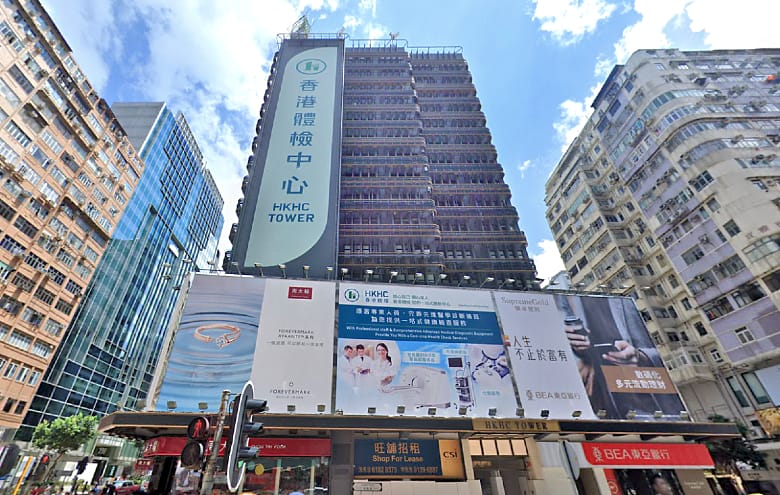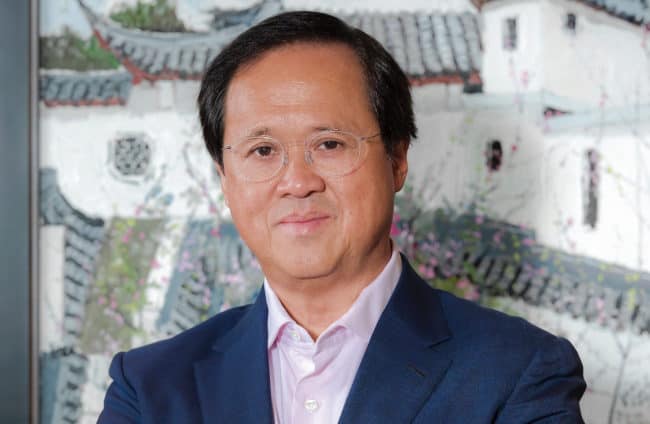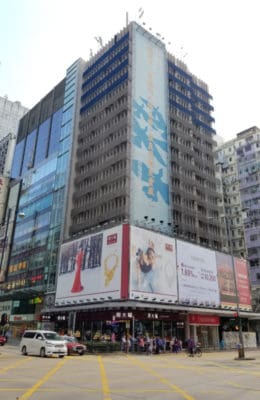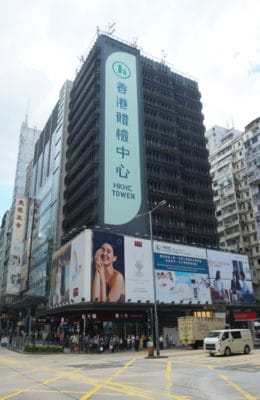
CSI’s HKHC Tower in Jordan, Kowloon
Having raised a line of international capital for Hong Kong development projects, HKEX-listed CSI Group has now shifted focus to its sponsorship of CSI’s first Greater China Value Add fund, as it prepares to make its expertise at repositioning property assets to enhance yields available to a broader pool of investors. The fund seeks to capitalize on the opportunities it is seeing in Hong Kong and key Greater Bay Area markets in China.
“We are strong believers in the solid long term growth and integration of Hong Kong and the Greater Bay Area”, said Mico Chung Cho-yee, the dealmaker that has been at the helm of CSI Group for over 20 years. “This a very interesting time to invest in our home markets where we are seeing attractive cyclical buying opportunities to acquire aged assets and give them a new lease of life,” he added, “CSI has traditionally done very well in such investments and will seek to deliver superior returns for our fund investors”.
CSI Group, a leading property investor and developer in Greater China initiated the fund in the third quarter of 2021 with a goal of deploying up to $800 million in equity over the next three years. The firm has established a portfolio of approximately 3.5 million square feet of properties under active management and development in Hong Kong and Shanghai. Since 2004, CSI has deployed HK$6.6 billion in 25 fully realized investments with a median IRR of 46.2 percent and a median equity multiple of 2.4x.
CSI’s Greater China Value Add fund will be supported by CSI’s in-house team of acquisitions, project management, leasing and sales experts, currently totaling over 100 employees.
Hong Kong – At an Inflection Point
CSI has been active in Hong Kong for the past 17 years and expects to continue focusing on opportunities in the city as it moves past the challenges of the past three years into a new era of growth.

CSI Properties chairman and executive director Mico Chung
The prolonged impacts of the domestic protests followed by COVID-19 have taken their toll across commercial sector rents and capital values, providing a rare entry point. Grade A office capital values remain 30 percent below their 2018 peak and rents are down 20 percent. However, with transaction levels accelerating since the first quarter of this year, CSI sees the market at an inflection point.
“We believe Hong Kong will play an increasing role within the Greater Bay Area and the structural growth and integration of the region will be positive for Hong Kong property”, said Andrew Taylor, the CEO of CSI’s Value Add Fund. “Demand will normalize, and we are already seeing some promising signs even prior to borders opening”, he added.
According to government data, retail sales in August of this year registered their seventh straight month of positive growth, rising 11.9 percent from a year earlier to HK$28.6 billion ($3.67 billion). In the office sector, net absorption of Grade A space across Hong Kong totalled 327,700 square feet (30,444 square metres) during the three months ending 30 September, the first positive take-up since 2019, according to Cushman & Wakefield.
The Promise of the Greater Bay
The immense infrastructure development and expansion of “one hour living circles” around key cities in the Greater Bay Area cities has significantly enlarged Hong Kong’s hinterland.
- Everest Building (now known as Hong Kong Health Check Tower) before refurbishment
- Hong Kong Health Check Tower in the present
To date, the development of rail, roads and other links has created a one hour living circle around Hong Kong which encompasses over 72.5 million people across cities including Guangzhou, Shenzhen, Zhuhai, Dongguan, Foshan and Huizhou. This one hour living circle is set to expand further over the next 2 years to encompass another 7.2 million people as infrastructure continues to improve. This enhanced connectivity bodes well for the property sector across the key cities of the GBA.
Given the growth potential, the fund will also be targeting value-add deals in key cities within the Greater Bay Area where there has been a significant shift in opportunity set from pure development to value-add.
“Property stock in core areas of many key cities has been built out, was often poorly designed and is now starting to become aged and due for revitalization”, said Andrew Taylor. Now the chief executive of CSI’s Value Add Fund, Taylor has closed over $2.4 billion of deals in China over the past 10 years across the commercial, industrial and residential sectors. He will be supported by CSI Group’s 13 Mainland-based professionals and backed up by the Hong Kong team.
In addition, initiatives such as The Northern Metropolis are opening up promising new investment opportunities that ride the wave of increasing integration between Hong Kong and other key cities within the world’s largest mega-city, with population of some 86 million people.
The Northern Metropolis aims to facilitate closer cooperation between Shenzhen and Hong Kong and includes the repurposing and development of around 240 hectares of land in Hong Kong’s northern New Territories as part of the Shenzhen-Hong Kong I&T Cooperation Zone which is targetted to span approximately 540 hectares.
This repurposing will go hand-in-hand with the development of close to 1 million new homes to accommodate the planned 2.5 million residents in the area which will provide the much-needed human resources to power the Shenzhen-Hong Kong I&T Cooperation Zone. “We believe in Hong Kong’s long term relevance and projects such as this will continue to solidify Hong Kong’s key and enduring role in the GBA,” said CSI Group CEO Mico Chung.
Giving Older Assets a New Lease on Life
The key to unlocking value in this market, according to CSI, lies the company’s track record in repositioning and revitalising aged buildings that are inefficient or obsolete.

Andrew Taylor of CSI Properties
“These buildings have a large carbon footprint when in operation but a huge amount of waste would be generated if they fall into disuse and are demolished,” said CSI’s Taylor. “Up to 50 percent of the greenhouse gas emissions for an office building are embodied carbon. More emissions would be generated upon full redevelopment and the construction waste ends up in Hong Kong’s landfills which are rapidly reaching capacity. At CSI, we aim to refurbish aged stock, make them more efficient and extend their useful lives. This provides both attractive locations for corporates and enhanced yields for investors”.
A good example of this is the former Everest Building (now known as Hong Kong Health Check Tower) located at 241-243 Nathan Road in Jordan. CSI acquired that 1960s-era commercial asset when it had significant vacancy and highly inefficient systems.
Through the value add efforts of CSI’s in-house acquisitions, project management and leasing teams, CSI completed a substantial refurbishment which included a full overhaul of the façade, elevator and M&E systems. The building has since been leased up to blue chip tenants including the Hong Kong Health Check & Medical Diagnostic Centre which has has occupied 10 out of 16 floors of the building.


Leave a Reply